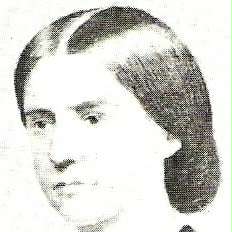
1844 - 1944
Constance Emily Kent
Summary
Name:
Constance Emily KentNickname:
Ruth Emilie KayeYears Active:
1860Birth:
February 06, 1844Status:
DeceasedClass:
MurdererVictims:
1Method:
StabbingDeath:
April 10, 1944Nationality:
United Kingdom
1844 - 1944
Constance Emily Kent
Summary: Murderer
Name:
Constance Emily KentNickname:
Ruth Emilie KayeStatus:
DeceasedVictims:
1Method:
StabbingNationality:
United KingdomBirth:
February 06, 1844Death:
April 10, 1944Years Active:
1860Date Convicted:
July 21, 1865bio
Constance Emily Kent was born on February 6, 1844, in Sidmouth, Devon, England, to Samuel Saville Kent, a government factory inspector, and Mary Ann Windus, a woman of London gentry. She was the ninth child in a large family and the fifth daughter. Constance's early years were marred by family discord, as her mother’s mental and physical health declined and her father pursued a scandalous extramarital relationship with the family’s nanny, Mary Drewe Pratt, whom he later married following Mary Ann’s death.
After the remarriage, Constance and her full siblings experienced emotional neglect, while the new children of the second marriage, particularly Francis Saville Kent, received their father’s full affection and attention. The resulting family tensions were sharp and bitter, especially for Constance, who was removed from the emotional center of the household. Her educational background included time at respectable schools and a finishing school in Dinan, France. Yet beneath the veneer of respectability, Constance struggled with resentment and isolation.
Despite the strained family environment, Constance maintained a strong relationship with her older brother, William Saville-Kent, a bond that later fed speculation that he may have been involved in the infamous crime for which she became known. As a young woman growing up in Victorian society, she was subject to expectations of propriety and repression, and it was in this pressurized context that she would commit one of England’s most shocking child murders.
murder story
In the early hours of June 30, 1860, the quiet village of Rode, Wiltshire (then spelled "Road") awoke to news that Francis Saville Kent, aged three, had vanished from his cot during the night. His body was later discovered stuffed into the vault of a privy-house on the family estate. He had been stabbed in the chest and throat, the latter wound so severe that he was nearly decapitated. His nightshirt was bloodstained, and he had been wrapped in a blanket—signs of both familiarity and calculation.
The gruesome murder shocked Victorian society. Initial suspicion fell on the family nursemaid, Elizabeth Gough, but she was released due to lack of evidence. The case soon drew the attention of Detective Inspector Jack Whicher of Scotland Yard, who became convinced that 16-year-old Constance Kent was the killer. Whicher’s suspicions led to her arrest on July 16, 1860, but she was released due to a lack of physical evidence and fierce public backlash—aristocratic society resented the notion of a working-class detective accusing a young gentlewoman of murder.
The case went cold for five years. Then, in 1865, Constance unexpectedly confessed her guilt to Reverend Arthur Wagner, an Anglo-Catholic clergyman in Brighton. According to her own written and oral confessions, she had planned the murder in advance. After the household had gone to sleep, she crept into Francis’s room, removed him from his bed without disturbing the sheets, and carried him to the outside privy. There, by candlelight, she used a razor stolen from her father to slash his throat.
Her stated motive was never fully clarified. Though she claimed she bore no jealousy toward her half-brother, many believed it was a revenge killing, targeting her father through the death of his favored child. Some speculated that her confession was made to protect her beloved brother William, who had also been suspected. But Constance never recanted her statement and served her sentence without public complaint.
At her trial in Devizes Assize Court, Constance pleaded guilty, thereby avoiding a full trial. The judge, noting her age at the time of the murder and her confession, commuted her death sentence to life imprisonment. She served 20 years in prisons including Millbank, where she was reportedly engaged in hard labor such as laundry work and cleaning. There are disputed claims about whether she created church mosaics during her sentence; modern scholarship has cast doubt on those stories.
Upon her release in 1885, Constance emigrated to Australia, changed her name to Ruth Emilie Kaye, and attempted to rebuild her life in anonymity. She trained as a nurse and became a respected matron at several institutions in New South Wales, including the Pierce Memorial Nurses’ Home in East Maitland, where she served until her retirement in 1932.
Despite her past, Constance Kent lived out her remaining years peacefully and in relative obscurity. She died on April 10, 1944, in Sydney, aged 100, having outlived nearly everyone connected to the crime. Her case remains a haunting example of familial dysfunction, Victorian repression, and unresolved psychological motive. It also provoked significant legal debate about priest–penitent privilege and the role of confession in English law.